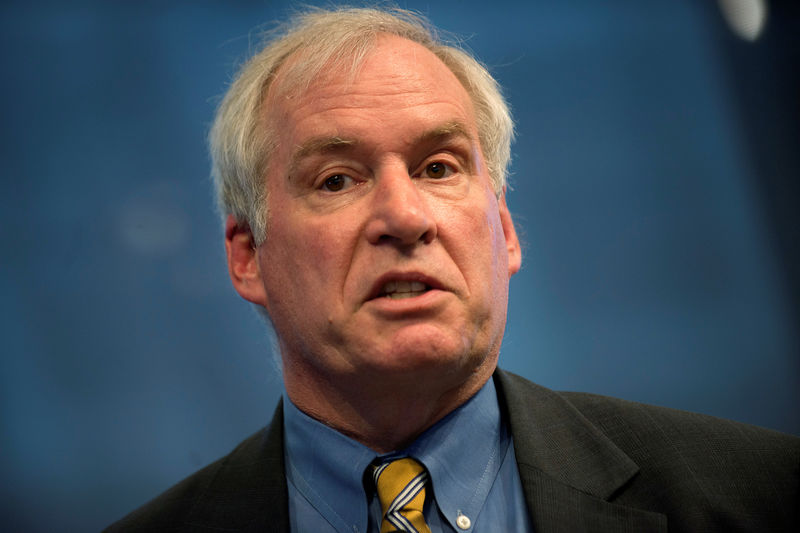 © Reuters. File Photo: The Federal Reserve Bank of Boston’s President and CEO Eric S. Rosengren speaks in New York
© Reuters. File Photo: The Federal Reserve Bank of Boston’s President and CEO Eric S. Rosengren speaks in New York(Reuters) – Joining a chorus of caution among U.S. central bankers after a tumultuous period in stock markets, Boston Federal Reserve Bank President Eric Rosengren on Wednesday said the Fed can wait to see how the economy fares before any further interest rate hikes.
“There should be no particular bias toward raising or lowering rates until the data more clearly indicate the path for domestic and international economic growth,” Rosengren said in remarks prepared for delivery to the Boston Economic Club. “I believe we can wait for greater clarity before adjusting policy.”
Rosengren, a voter this year on the Fed’s interest-rate-setting decisions, said his baseline expectation remains for consumer spending to fuel solid growth in 2019 and lead to somewhat tighter labor markets. He said he suspects financial market sentiment is “unduly pessimistic” and does not himself expect an economic downturn.
Still, he sounded a far different tone from his last speech, delivered in October ahead of the Fed’s fourth rate hike of 2018. Then, he emphasized the risks of allowing unemployment to stay below sustainable levels for too long. This time around, Rosengren’s references to risks focused on ones that could impinge on growth.
“Recent data from China’s economy, the potential for increased trade tensions, and heightened volatility all counsel for policy to be both flexible and patient,” Rosengren said. “I recognize that the risk of a U.S. economic slowdown, led by weakness abroad, has increased.”
If recent stock market declines do portend an economic slowdown domestically, he said, “there might be less need – or even no need – for further tightening of monetary policy by the Federal Reserve.”
He made clear he does not necessarily expect that. Monetary policy remains accommodative, he said, and financial markets could rebound should the economy prove more resilient than expected. Indeed, U.S. stocks on Wednesday were on track for their fourth straight day of gains.
Still, with inflation showing no signs of breaking higher than the Fed’s 2-percent target, Rosengren joined other Fed policymakers in urging a wait-and-see approach.
“The appropriate stance for monetary policy is, for now, to not have a bias on moving policy in either direction until there is greater clarity around economic trends here and abroad,” he said.
Fusion Media or anyone involved with Fusion Media will not accept any liability for loss or damage as a result of reliance on the information including data, quotes, charts and buy/sell signals contained within this website. Please be fully informed regarding the risks and costs associated with trading the financial markets, it is one of the riskiest investment forms possible.
Source: Investing.com





























